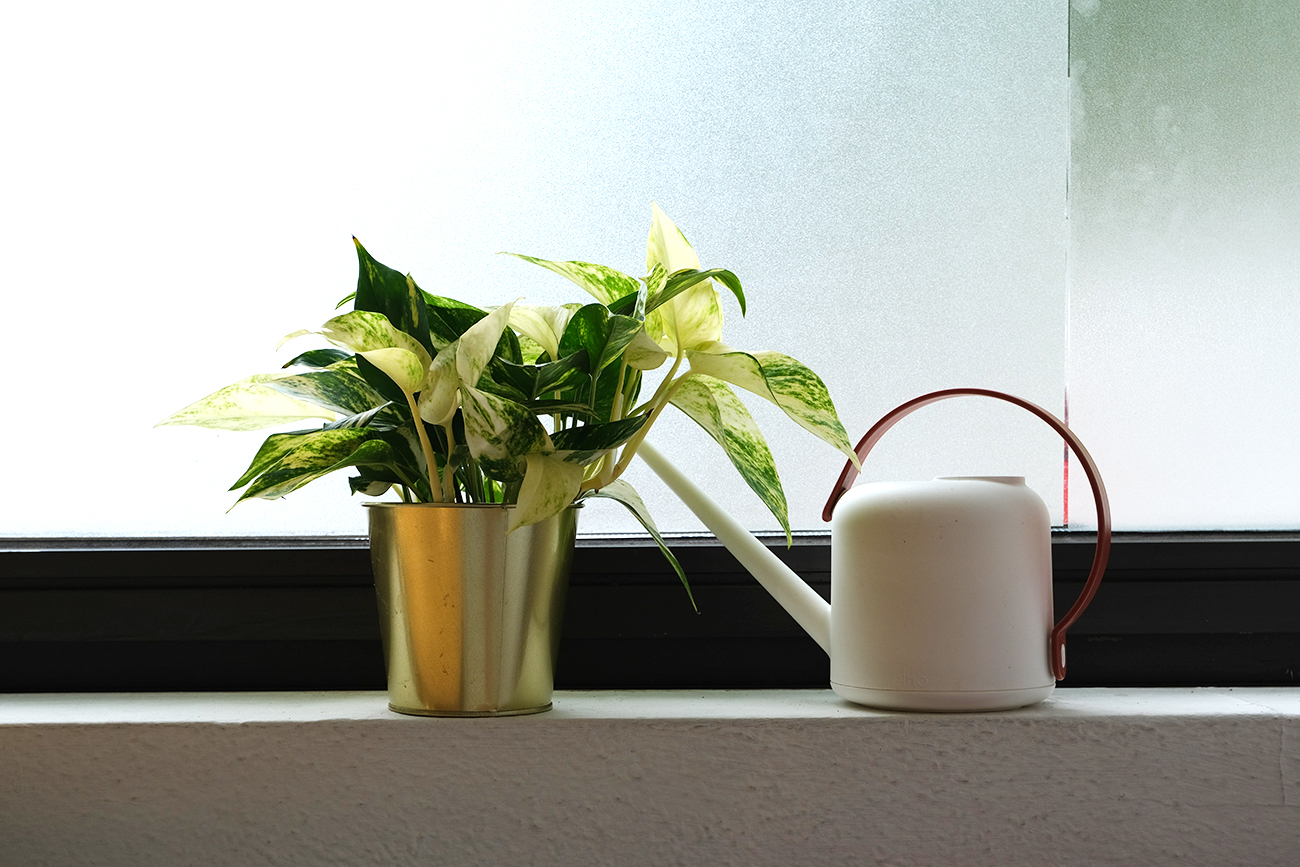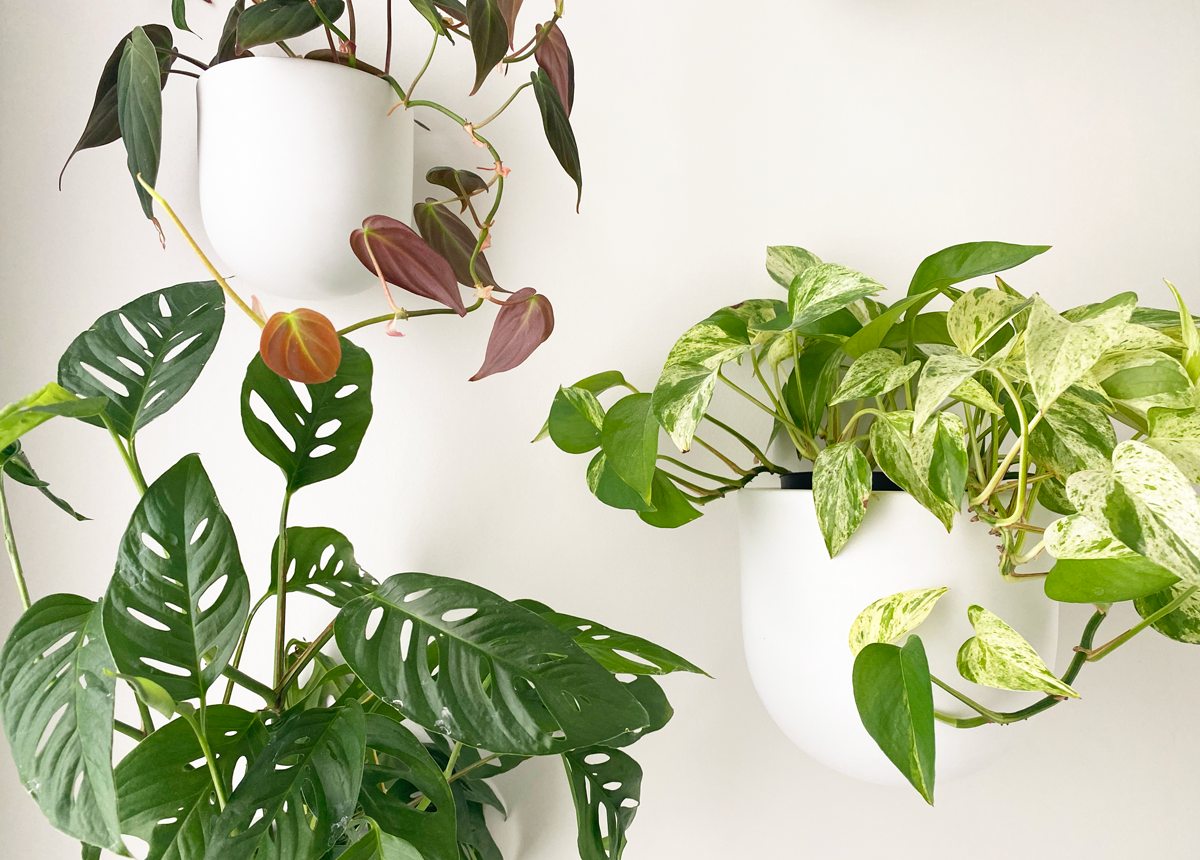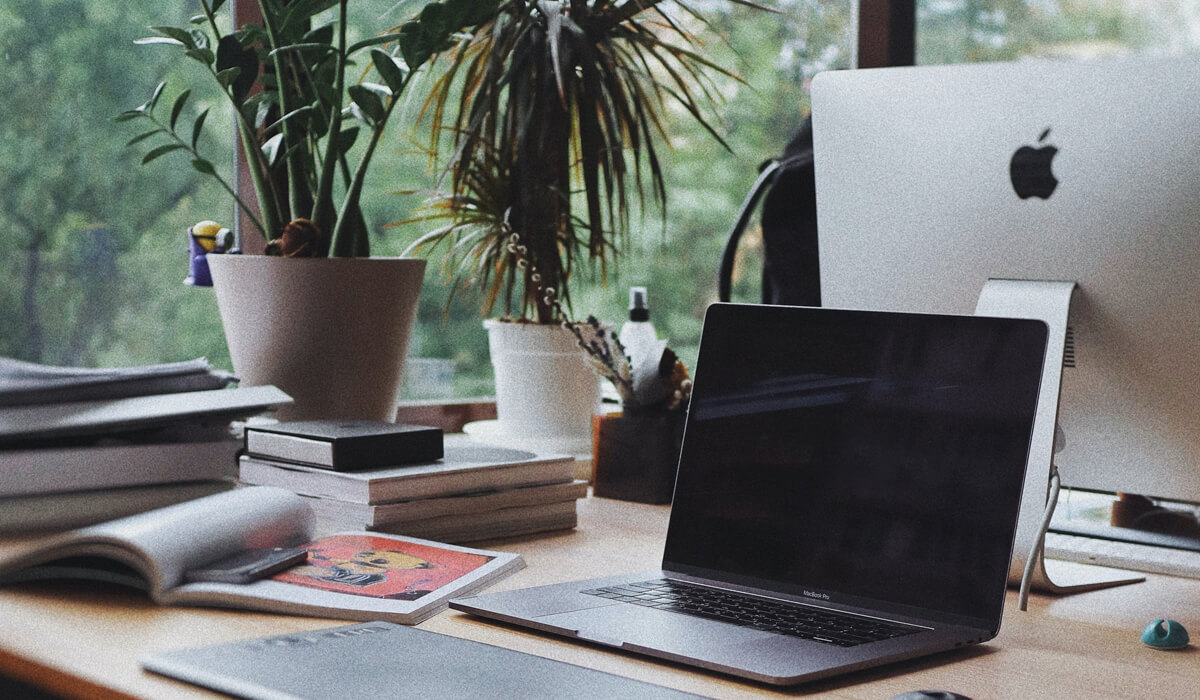Learn the basics of watering plants so you can keep your indoor garden alive. This article covers essential information every indoor plant owner should know, including:
- how to choose the best plant pots
- how your plant’s location impacts watering
- when to water your plants
- why you shouldn’t use tap water for your plants
Choosing the right plant pots
The pots you keep your plants in have a huge impact on the water in their environment.
Unglazed ceramic pots like terra cotta are the best
You want to choose porous pots, so water and air can pass through the sides, as well as the top. Terra cotta and other unglazed ceramic pots are the best options.
What to know about using plastic pots
Plastic pots are non-porous, which means water and air cannot pass through them. So, water stays trapped in the pot for longer. Because of this, you won’t need to water your plants as often when they are in a plastic pot.
Pot size and watering
The size of the pot also impacts how often you’ll need to water. Larger pots hold more water for a longer period, while smaller pots tend to dry out faster.
Always use pots with drainage holes
Overwatering is a common house plant killer. To help avoid this issue, make sure that your pots always have drainage holes—especially if you’re using plastic pots.
If a pot does not have drainage holes, do not plant directly in it. Standing water at the bottom of a pot is sure to kill your house plants.
Putting your plants in the best location
The amount of sun, heat, and humidity your plant gets will also impact how much water it needs.
Plants in areas with more sun, higher heat, and lower humidity will need more water more often.
If a plant is in a shady, cool area, it will need less water.
When choosing a location for your plants, remember that plants live outside, and indoor conditions generally do not provide enough light.
Be sure to research the lighting conditions your particular house plants need before choosing a location—and try not to change their living conditions dramatically overnight.
How to time watering just right
You should never use a watering schedule religiously. Although knowing that your plants are happiest when you give them a drink every weekend is useful, watering your plants because you did it seven days ago is not a good idea.
An overcast week or a heatwave could mean that your plants need more or less water.
Instead of using a schedule, measure your plants’ thirst by:
- checking if the soil is damp by sticking your finger a few inches into the pot
- paying attention to signs of thirst, like droopy leaves in leafy plants and soft leaves in succulents
In general, underwatering is easier to fix than overwatering. Once your plant has root rot, it’s much harder for it to bounce back than if it were just dehydrated.
Methods for getting cleaner water for your plants
Most indoor gardeners know that plants need sunlight and water—but that’s not all. Most plants also require appropriate chemical balances in their soil.
This is why fertilizer (which contains nitrogen, phosphorous, and potassium) can help your plants grow when given in moderation and kill them if given too much.
Well, there are also chemicals in tap water, which many indoor gardeners use for their house plants. To provide the best life possible for your indoor plants, you have a few options.
Let tap water sit overnight
If you fill a container with tap water and leave it uncovered overnight, some chemicals will evaporate out of it. This method works, and it’s affordable. All you need is patience and a container.
Collect rainwater
Although rainwater in polluted areas can carry pollutants, it’s generally safer for your plants than tap water.
Leave a few containers outside when it rains and use that to water your plants. Just be sure to avoid any runoff from structures, which can contain harmful bacteria, chemicals, and pests that could hurt your plants.
Purchase distilled water
Distilled water is created by catching and condensing the steam from boiled water. This type of purified water is the best for your plants, but it can get pricy depending on how many houseplants you own.



